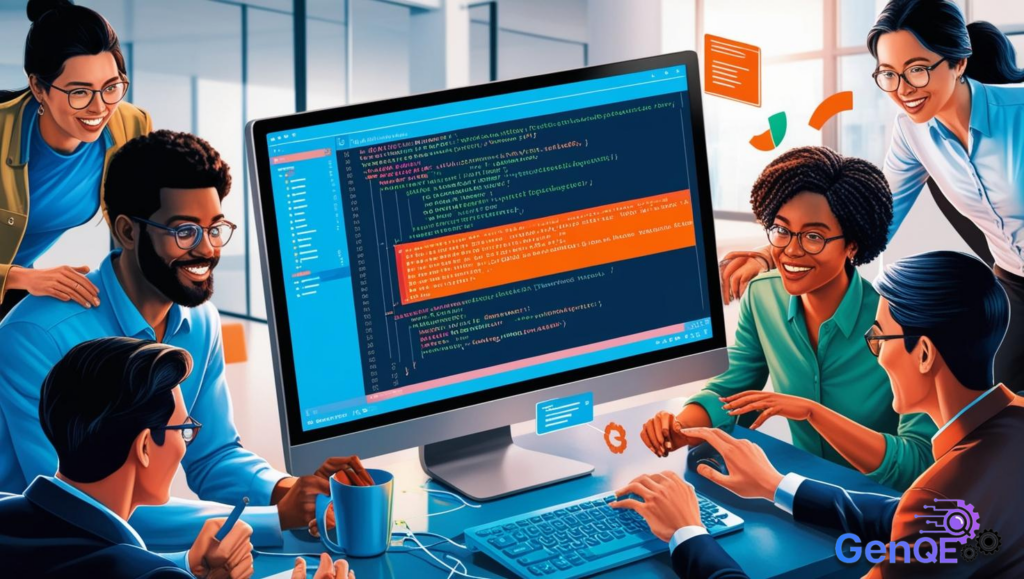
Introduction
Software testing stands as the silent guardian of digital reliability, a critical discipline that ensures the seamless functionality of technologies we rely on every day. From the smartphone apps that guide our daily lives to the complex systems powering global infrastructure, software testing represents the last line of defense against potential technological failures.
The landscape of software testing has undergone a remarkable transformation over the past decades. What once was a manual, time-consuming process has evolved into a sophisticated, intelligent discipline driven by advanced technologies and innovative approaches. This evolution has been necessitated by the increasing complexity of software systems and the ever-growing demands of digital transformation.
Modern organizations understand that software testing is no longer a peripheral activity but a strategic imperative. The cost of software failures can be astronomical, ranging from financial losses to irreparable damage to brand reputation. A single undetected bug can potentially compromise entire systems, leading to catastrophic consequences across various industries.
The Historical Context of Software Testing
The origins of software testing can be traced back to the earliest days of computing. In the 1950s and 1960s, software testing was an entirely manual and rudimentary process. Programmers would meticulously walk through code, manually executing each function and documenting potential issues by hand.
During the 1970s, the first structured approaches to software testing began to emerge. Computer scientists started developing more systematic methodologies for identifying and preventing software defects. This period marked the transition from ad-hoc testing to more organized quality assurance practices.
The 1980s and 1990s saw significant technological advancements. The introduction of personal computers and more complex software systems demanded more sophisticated testing approaches. Early automated testing tools began to appear, allowing teams to create repeatable test scripts and reduce the manual workload.
By the early 2000s, software testing had become a specialized discipline. The rise of agile methodologies, continuous integration, and DevOps practices further transformed how organizations approached quality assurance. Testing was no longer a final stage in software development but an integrated, continuous process.
Modern Challenges in Software Testing
The current software development landscape presents unprecedented challenges. Modern applications are no longer standalone entities but complex ecosystems of interconnected services, APIs, and cloud-based infrastructures. This complexity introduces multiple layers of potential failure points that traditional testing methodologies struggle to address.
Microservices architectures have become increasingly prevalent, creating additional testing complexities. Each microservice requires independent testing while also necessitating comprehensive integration testing. The dynamic nature of these systems means that testing strategies must be equally flexible and intelligent.
Cloud computing has further complicated the testing landscape. Applications must now be tested across multiple environments, platforms, and configurations. The rise of hybrid and multi-cloud strategies means that testing must account for diverse technological ecosystems.
Emerging technologies like artificial intelligence, Internet of Things (IoT), and edge computing introduce entirely new dimensions of testing challenges. Traditional testing approaches are often inadequate for these advanced technological paradigms, requiring more sophisticated and adaptive testing strategies.
Innovative Testing Methodologies
Artificial Intelligence in Software Testing
Artificial intelligence has emerged as a game-changing technology in software testing. Machine learning algorithms can now:
- Automatically generate test cases
- Predict potential failure points
- Analyze historical defect data
- Optimize testing strategies in real-time
Subtle Reference: Platforms like GenQE demonstrate the potential of AI-driven testing, showcasing how intelligent systems can transform traditional quality assurance approaches.
Machine learning enables more intelligent test case generation. By analyzing historical application data, AI systems can identify high-risk areas, prioritize testing efforts, and create more comprehensive test scenarios than human testers could develop manually.
Continuous Testing Approaches
Continuous testing has become a cornerstone of modern software development strategies. This approach integrates testing throughout the entire software development lifecycle, ensuring continuous quality validation.
DevOps methodologies have accelerated the adoption of continuous testing. By embedding testing processes directly into development pipelines, organizations can identify and address potential issues much earlier in the development cycle.
The Human Element in Modern Testing
Despite technological advancements, human expertise remains crucial in software testing. While AI and automated tools can handle repetitive tasks, human creativity, intuition, and domain knowledge are irreplaceable.
Modern quality assurance professionals are evolving into strategic partners in software development. Their role has transformed from manual testers to quality engineers who:
- Design complex testing strategies
- Interpret sophisticated test results
- Guide AI-powered testing tools
- Provide strategic quality insights
Future Trends in Software Testing
The future of software testing is increasingly intelligent and predictive. Emerging technologies are set to revolutionize how organizations approach quality assurance.
Quantum computing promises to introduce entirely new testing paradigms, offering unprecedented computational capabilities for complex scenario simulations. Artificial intelligence will continue to play a more sophisticated role in predictive quality engineering.
Conclusion
Software testing has evolved from a simple verification process to a complex, intelligent discipline. As technology continues to advance, testing strategies must become equally sophisticated, adaptive, and proactive.
Organizations that invest in advanced testing methodologies, embrace artificial intelligence, and foster a culture of continuous quality improvement will be best positioned to succeed in the digital landscape.
The future of software testing is not about finding bugs—it’s about preventing them before they can impact users.